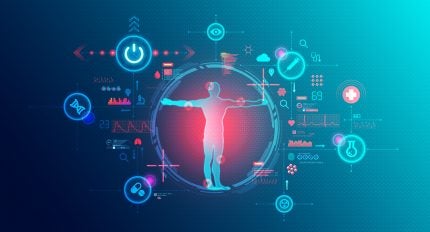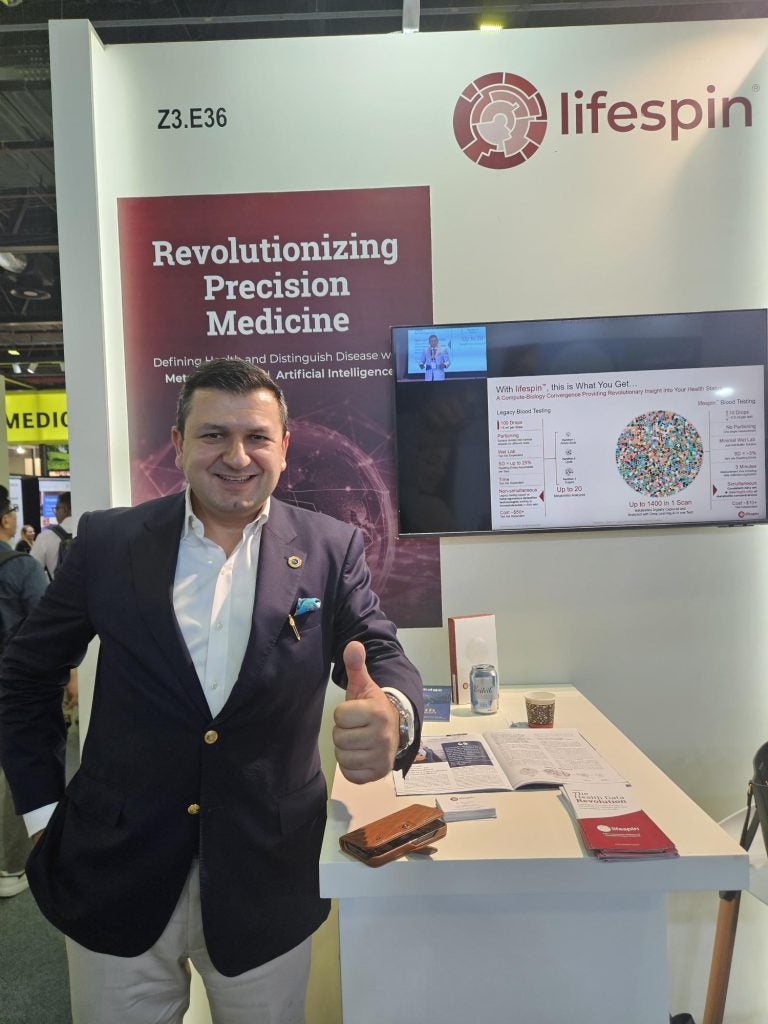
Precision medicine has gained popularity in various fields of medicine, including oncology, cardiovascular, neurology and autoimmune disorders. But although the approach has the potential to provide superior outcomes for patients, the integration of new innovations with healthcare systems has been slow.
In an exclusive interview with Medical Device Network at Arab Health 2024, Dr. Ali Tinazli, CEO of precision medicine startup Lifespin, discussed how deep data can reshape disease treatment and the need to lower costs for worldwide implementation.
Medical Device Network: Where are healthcare systems currently at with integrating precision medicine in patient treatment?
Dr. Ali Tinazli: What we’ve seen in the last 30 years is basically the rise of genomic technologies where health systems are getting tests such as liquid biopsies into standard of care. The downside is it that is taking too long for systems to adapt, the tests are too expensive, and physicians still don’t know how to deal with this type technology.
The major barrier though out of all them is that the methods are just too expensive. It can cost thousands of dollars to get a meaningful test and then if they are insightful, clinicians are unable to do them often because of the cost. The good thing though is that over the past decade there is more awareness about multiomics in medicine and an increased understanding about the benefits.
MDN: Tell us about the approach Lifespin is taking.
AT: At Lifespin, we have discovered that in specific diseases the ratio of metabolites to each other differs distinctly from the standardised healthy baseline. Metabolite ratios can therefore serve as quantitative biomarkers for specific diseases. By capturing individual metabolomes using Nuclear Magnetic Resonance (NMR) measurements and combined with our artificial intelligence (AI) algorithms, we want to drive a new generation of sustainable and equitable healthcare.
Our method works by taking a venous blood sample from the patient (and it’s important that it is venous blood because that gives the most comprehensive, chemical information about the body) and then taking half a millilitre of plasma or serum. We then add HBS buffer and insert it into our automated instrument.
How well do you really know your competitors?
Access the most comprehensive Company Profiles on the market, powered by GlobalData. Save hours of research. Gain competitive edge.

Thank you!
Your download email will arrive shortly
Not ready to buy yet? Download a free sample
We are confident about the unique quality of our Company Profiles. However, we want you to make the most beneficial decision for your business, so we offer a free sample that you can download by submitting the below form
By GlobalDataThe instrument uses NMR but it’s off the shelf so you can buy it anywhere. It’s just a standard instrument so anyone can do a scan of the blood sample and there doesn’t need to be any toxic chemical reagents, making it very eco-friendly. Overall, the workflow is extremely simple and is fully automated which means a skilled workforce isn’t needed to perform the test. The blood sample is scanned, which takes about a couple of minutes (depends on the quality of automation response) and the scan capture hundreds of metabolites or chemical molecules quantitatively.
What happens then is we take the patient’s information such as age, biological sex, or comorbidities, and place this into the system. With this information we can build a digital twin of the patient and compare the digital twin to hundreds of thousands of patient profiles in our proprietary database.
These are patients from actual clinical studies, and we have about 700 disease phenotypes from many fields including oncology, neurology, inflammatory diseases etc. We have found that the metabolome as a clinical modality is a disease agnostic hypothesis free field so in many ways it is like a stethoscope. When I speak to physicians about our technology, I explain it like that. Now we know what a healthy baseline is for the metabolome due to profiles of more than 90,000 individuals, we can detect any variation that is not healthy and associate the probability for specific diseases.
At the current stage, the test is a decision support tool, and we can basically say which diseases are most likely that the patient has. Also, for high-risk demographics, like elderly individuals who may develop chronic disease, or frailty, we can also determine that. We’ve also started studies in the Far East on elderly populations to determine what the economic impact is of frailty so the right level of care can be provided. But the best thing about the technology is the cost.

MDN: How much does the method cost?
AT: Everyone thinks it must cost a lot, right? But what if I told you, it’s about the price of a pizza margherita! The beauty of our method is that the price is sustainable for emerging economies. My dream is that the test could be used on any incoming patient in a healthcare setting. So for example, adding fees imagine that it ended up costing around $50 as a ballpark figure, it would be a great price to pay so that clinicians can get a much better picture of their patient and detect unusual cases.
Right now, many people go to their general practitioners but are incorrectly diagnosed as the physicians don’t have all the pieces of information. This can be dangerous as a wait time to diagnose serious conditions such as multiple sclerosis or cancer loses precious time for the patients and means they can get to the point of no return.
Obviously, our test may sound too good to be true, but we’ve conducted many clinical studies in Europe which confirm its utility. And over time, we’ve diversified the patient samples to different geographies from Hong Kong to Saudi Arabia and of course, we’re expanding and going into more countries and continents to verify our hypothesis. Overall, we trust from a scientific standpoint, that it seems to be right.
MDN: What is the opportunity that you see for precision medicine adoption in the Middle East?
AT: I took my first visit to the Gulf region, only last year and I was amazed by what I saw. Not only the amazing infrastructure but also the spirit of the people. It felt like Silicon Valley 20 years ago where everything seemed possible. If you look at Silicon Valley today, it has slowed down and there’s a lot of techno pessimism.
Typically, our target audience is innovative healthcare providers who know what multiomics is. Over the last year I’ve visited Riyadh, Abu Dhabi, and Dubai where I’ve found there is a great vibe and an appetite to try new things. The challenge in the Western world right now and specifically in Europe and the US is that despite amazing infrastructure and innovation, the pace of change is such that established organisations in the Western world cannot cope. Anything related to AI, many health systems are already struggling to adopt so clinicians are sticking to what they know, and this is an issue.
What I also like about the Emirates is that regulation is changing and adapting to the progress of technology. That is what the governments in the Western countries are missing out on.
In my opinion, one of the best markets is Hong Kong because the market is self-regulating. There are great physicians in Hong Kong, and they only prescribe treatment and technologies to their patient’s that are excellent. Of course, they typically tend to prescribe something which is already FDA approved as there is a level of credibility already but technically, they could prescribe anything.
This may seem an extreme example for those of us in the US, Germany, or UK but what we see in the Middle East is a good balance where the regulation is adaptive and is moving along with the market. Many of the decision makers are also in their 30s to 50s so they grew up with new technologies and know what they’re dealing with in terms of AI, cybersecurity and are very open minded.
MDN: What are the next steps for Lifespin?
AT: I’m interested in finding commercial partnerships because in terms of operations, I prefer to partner and together we can conquer the market. As a company we don’t want to lose time or reinvent the wheel!
The ideal partner must share our vision that precision medicine should not be expensive or considered a luxury medicine. We want to see our technology implemented everywhere as a standard of care.
For example, today, most people can access all sorts of information for free. That’s amazing compared to the 1980s where this information was only available to learn through expensive books. Now you can get free lectures from a course anywhere online. It’s not that I’m saying precision medicine should be free – but it should be affordable. If our cost structure is less than a pizza margherita, then I don’t want our go-to-market partner to sell it for the price of caviar and lobster!
We want our partners to understand this vision and recognise there is a responsibility to address the global south which is around 80 – 90% of the world population and completely missing out on these technologies right now which I find ridiculous. Often there is fear to target these new markets but in my experience there are pain points in introducing new technologies everywhere around the world so someone has to do it!






